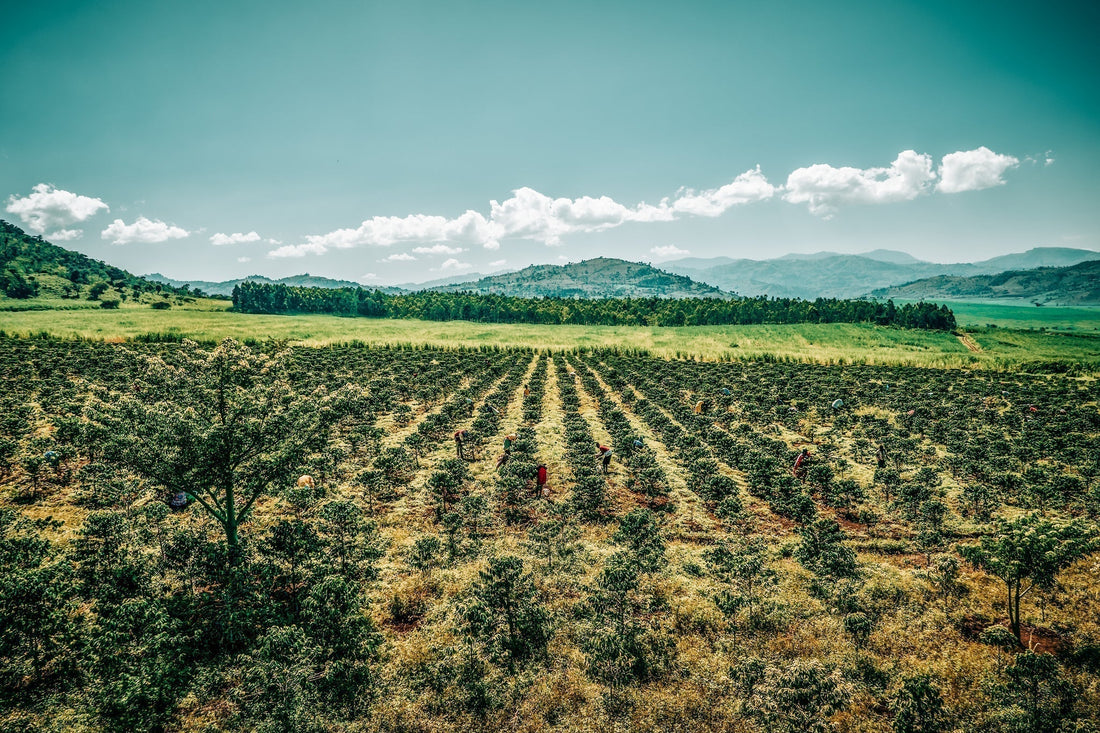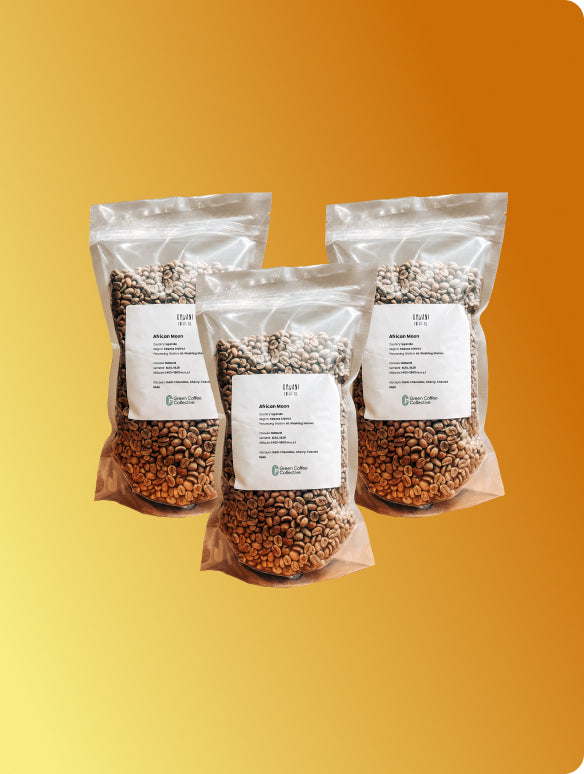This month’s subscription explores three of the world’s classic coffee origins—Brazil, Kenya, and Guatemala. These regions are known for their long-standing influence on the coffee industry, each with a distinct flavour profile and processing tradition. But coffee is constantly evolving and today, producers are challenging the norm, moving towards more unconventional processing methods and varietal choices.
This month, we’re exploring coffees that challenge expectations and offer a new perspective on these origins...
What makes an origin a ‘classic’?
Some origins are renowned for their history, production volumes, or signature flavour profiles. They’re places that have shaped the global coffee landscape. Yet there are still ways to break tradition and redefine what’s expected from these origins.
Brazil.
Brazil dominates global coffee production, responsible for around a third of the world’s supply. The sheer scale of its output makes it one of the most influential players in the industry, with fluctuations in its harvest affecting coffee prices worldwide. The country's harvest has a huge ripple effect on the rest of the global coffee industry. Crop disease, weather and political instability in Brazil can all have huge price repercussions for the rest of the global coffee industry.
Beyond its economic impact, Brazil’s coffee is known for a flavour profile often described as classic: unacidic, balanced, chocolatey. It’s a crowd-pleaser, widely consumed and easy to enjoy.
Kenya.
East Africa is known for its high-quality coffees with exceptional flavour profiles and is widely considered the ‘birthplace’ of coffee. Although it doesn’t compete with Brazil on quite the same levels in terms of production, Kenya is the leading African coffee exporter. Coffee was introduced here in 1893 but wasn’t cultivated in any significant way until British colonisation in the early 20th Century. During this time, it was cultivated as a cash crop that relied heavily on indigenous labour. Following the Mau Mau war (a Kenyan anti-colonial uprising against British rule between 1952-1960 that helped to achieve independence), local farmers were permitted to grow coffee although this was only under strict regulations. Yet it wasn’t until the early 21st century that these restrictions were eased, giving producers more control over their crops and enabling Kenyan coffee to be recognised as it is today in the speciality coffee world.
Guatemala.
Guatemala ranks among the top global coffee producers, with a reputation built on diversity. The country’s varied microclimates and high altitudes make it ideal for growing specialty coffee. There are accounts of coffee being grown in Guatemala from the mid-18th century but it only became a main export in the mid-19th century. Government programs throughout the 1800s aimed to stimulate the Guatemalan economy through coffee production.
Today, the country holds a solid reputation for high quality coffee, with a high proportion of its coffee being grown by small-holder farmers. Coffee traditions and expertise have been passed down through generations of small-holders, leading to high-quality diverse coffees across the country.
Why do certain processes or varietals come out of certain origins?
Coffee isn’t just shaped by terroir but also the processing methods and varietals that are traditional to certain regions.
There are over 100 species of coffee - the two most widely drunk are robusta and arabica. Within arabica alone, countless varietals exist, many of them selectively bred for disease resistance, yield, or flavour. Coffee has a very vulnerable genetic makeup which makes it susceptible to different weather conditions and means it has to be grown in a very specific environment. To make coffee more appeasable to certain regions, selective breeding and hybrid programmes are run by institutions such as World Coffee Research. In Kenya, for example, Scott Laboratories research centre has created the SL series of varietals that have different favourable properties that make them the best strains to grow on Kenyan soil.
Processing, too, is shaped by the environment. In countries with high rainfall, washed processing is common because natural drying can be unpredictable. In drier climates, natural processing is often favoured.
Coffees which highlight the theme ‘classic origins, unusual tastes’
Sitio Maranhão – Brazil
Our first coffee this month is an experimental variety from Brazil, sourced through Cargo Coffee. Brazilian coffee is often quickly dismissed in the specialty world, with many assuming its focus on quantity means the origin neglects quality. However, Brazil has great things to offer, with many local farmers experimenting with varied and innovative processing methods besides the traditional natural processes.
Sitio Maranhão, for example, is a small scale farm, producing only 300 bags a year. It focuses on thorough attention to detail in order to produce a coffee that showcases Brazil’s potential for high quality and a truly unique taste, far beyond bulk production.
Oyugis Honey - Kenya
Kenya is well known for its wet-processing, resulting in some of the most celebrated and high-quality coffees in the world. These washed Kenyans tend to produce exceptional clarity and high acidity. But this honey-processed lot presents something even more special. The honey process was popularised in Costa Rica after a 2008 earthquake which led to water restrictions, forcing producers to find alternatives to washed processing. Now, Kenyan farmers are applying the technique to develop sweetness. The typical sharp berry acidity of a washed Kenyan transforms into a richer, juicier berry profile in this lot.
Carmen Natural – Guatemala
Guatemala’s reputation is based on washed coffees, as this method is most suited to the country’s high annual rainfall. However the coffee we have chosen is a natural lot from Finca La Colina. This farm is equipped with both wet and dry mills, and has embraced natural processing, something rarely seen in Guatemala. This creates a coffee with a creamy mouthfeel reminiscent of melted dark chocolate - miles away from the bright acidity typical of a washed Guatemalan coffee.

